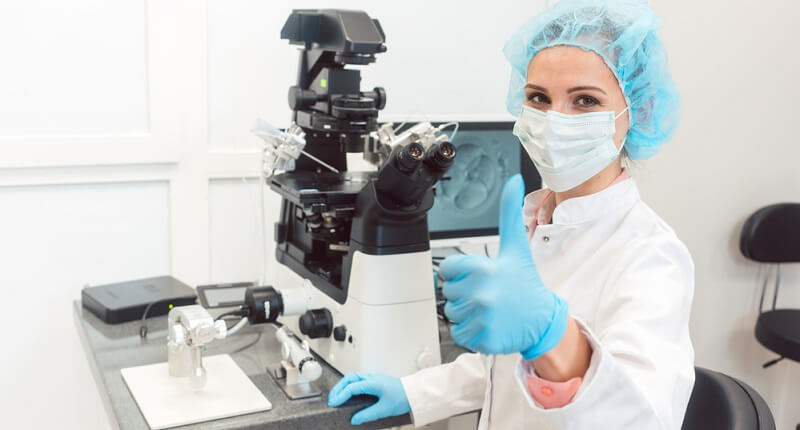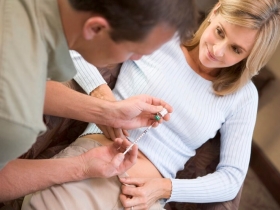Are there risks associated with IVF?
IVF is a safe procedure that has helped many people have children that would not have been able to otherwise. As with any procedure, some risks could occur. When looking into any procedure, it is important to be aware of any risks and side effects. Ovarian hyperstimulation syndrome is one risk to be mindful of when considering IVF.
What is Ovarian hyperstimulation syndrome?
Ovarian hyperstimulation syndrome (OHSS) is a rare complication that occurs due to IVF treatment. OHSS affects people who are more sensitive to fertility medicine. This sensitivity causes an increase in egg production. When too many eggs develop in the ovaries that can be very painful and uncomfortable. This syndrome usually occurs in the week after egg collection for IVF.
Some symptoms associated with OHSS are pain and bloating in your lower abdomen. You may feel quite sick and short of breath. Lightheadedness is another symptom of OHSS. If you are undergoing IVF and feel any of these symptoms, it is important to contact your doctor right away. You may need a different dose of fertility medicine. Predicting how people will react to medications such as medicine to stimulate the ovaries can be difficult. OHSS is rare, so it isn’t something to worry about, but it is important to be aware of nonetheless. [1]

What are the risk factors of OHSS?
There are some risk factors that make some people more likely to have OHSS. Some of these risk factors include:
- Young age.
- Having a low body mass index.
- Those with polycystic ovarian syndrome are at a greater risk.
- Having had OHSS before during an IVF cycle.
The risk of OHSS should be assessed, keeping in mind the patient’s history, physical exam, and the results of the ultrasound. There are also a few different severities of OHSS to be aware of. Mild OHSS is when the ovaries are enlarged up to 8 cm. The patient will often feel some bloating and mild discomfort. Moderate OHSS is when the ovaries are enlarged up to 12 cm. This can cause nausea, vomiting, and rapid weight gain. Only about 2% of all OHSS cases are classified as severe. Severe OHSS is when there are large ovarian cysts. This can cause many issues throughout the body and should be treated by a doctor quickly. The most severe case of OHSS is critical OHSS, which can cause many issues throughout the body, such as liver dysfunction, change in white cell count, and respiratory distress. [2]
How is OHSS treated?
Most mild forms of OHSS don’t require treatment. The fertility medicine will most likely just be adjusted in mild forms of OHSS. Severe OHSS does require treatment. The patient must be evaluated to ensure the status of electrolytes in the body and kidney and liver functions. Usually, OHSS is treated with intravenous fluids and close monitoring. If the patient has any respiratory distress, they will be admitted to intensive care and treated. A variety of treatments may be used to stabilize the body and ensure that the kidney and liver are not harmed.
Severe cases of OHSS that require treatment are quite rare. IVF is a common and safe procedure, but with any procedure, it is important to research the risks. Knowing the symptoms and warning signs of OHSS is important to ensure that if any symptoms occur, you can recognize them and inform your doctor. [3]
Sources:
[1] https://www.nhs.uk/conditions/ivf/risks/
[2] Namavar Jahromi B MD, Parsanezhad ME MD, Shomali Z MD, Bakhshai P MD, Alborzi M MD, Moin Vaziri N MD PhD, Anvar Z PhD. Ovarian Hyperstimulation Syndrome: A Narrative Review of Its Pathophysiology, Risk Factors, Prevention, Classification, and Management. Iran J Med Sci. 2018 May;43(3):248-260. PMID: 29892142; PMCID: PMC5993897.
[3] Aboulghar M. Treatment of ovarian hyperstimulation syndrome. Semin Reprod Med. 2010 Nov;28(6):532-9. doi: 10.1055/s-0030-1265681. Epub 2010 Nov 16. PMID: 21082512.





